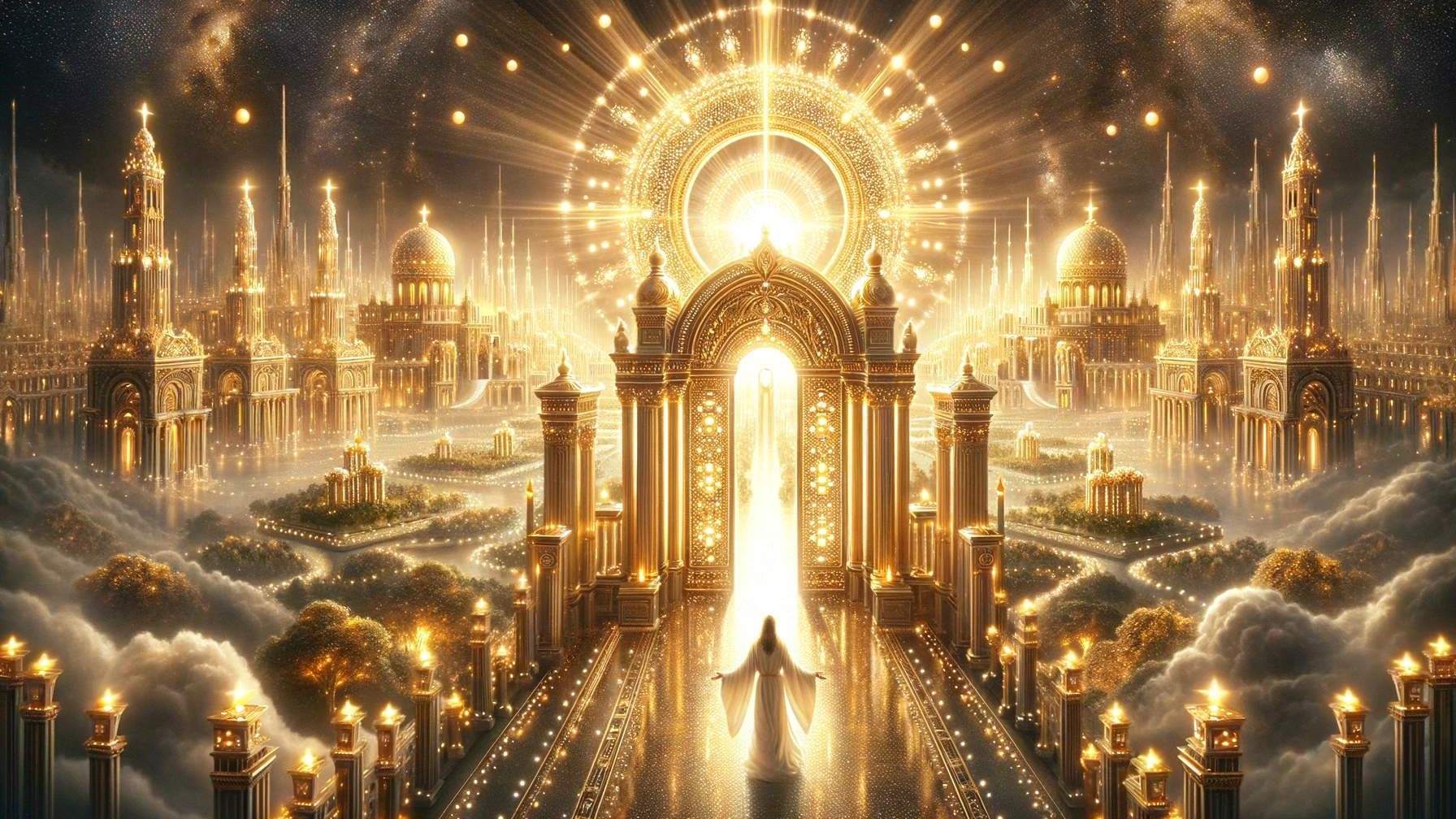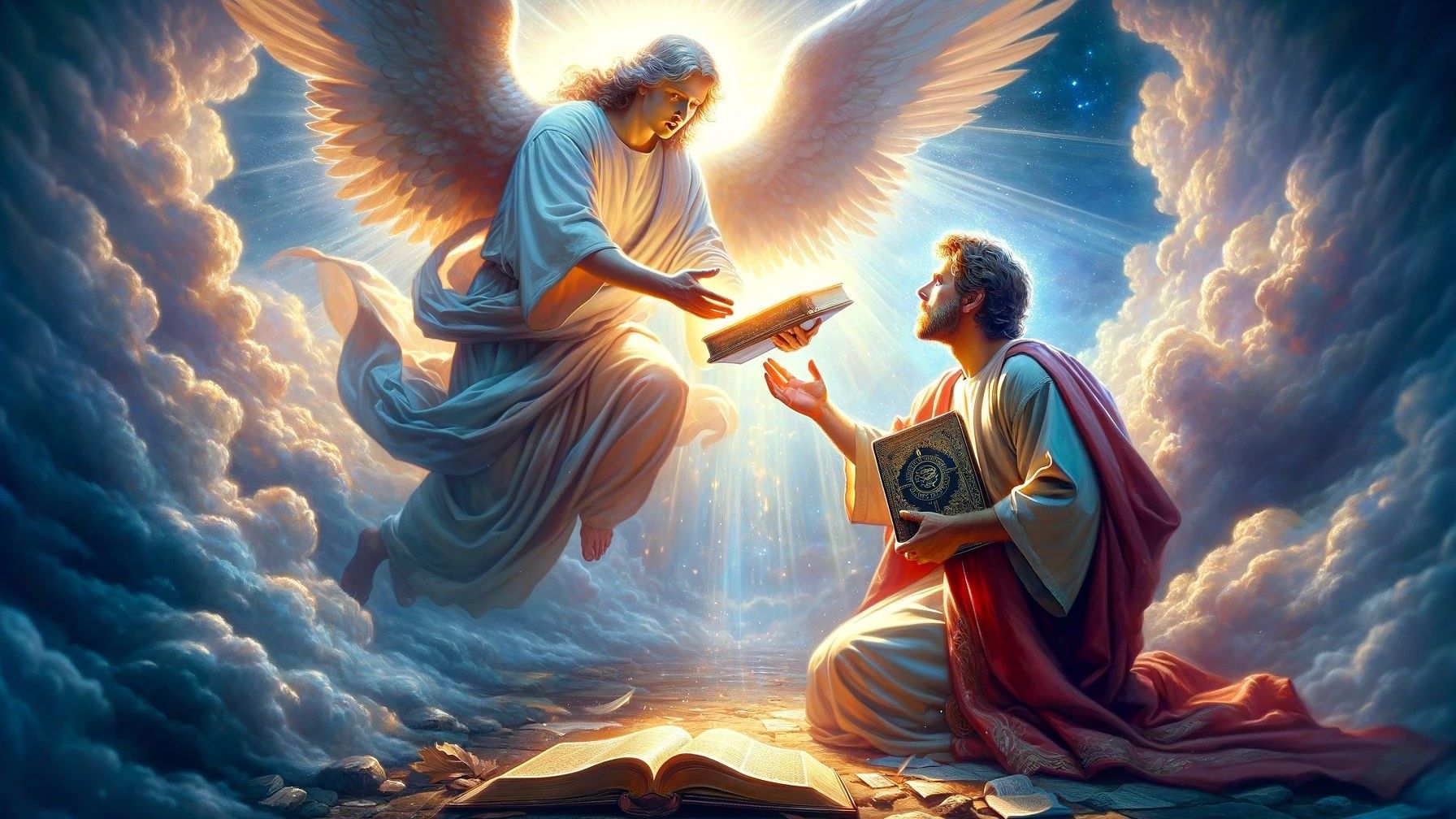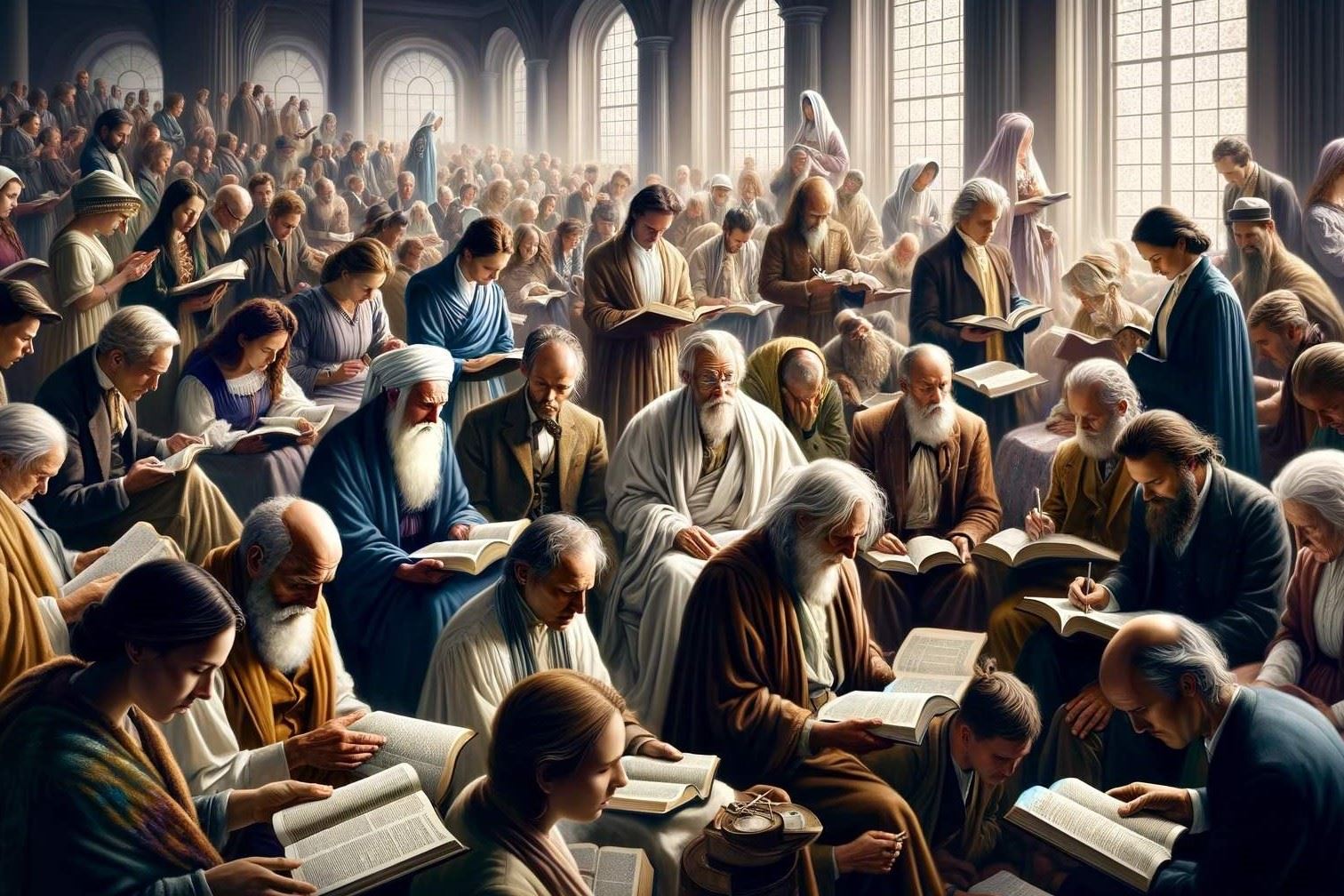Home>Bible Facts>How Is Jesus Revealed In The Book Of Revelation


Bible Facts
How Is Jesus Revealed In The Book Of Revelation
Published: February 11, 2024
Peter Smith, Editorial Director at Christian.net, combines deep insights into faith, politics, and culture to lead content creation that resonates widely. Awarded for his contributions to religious discourse, he previously headed a major organization for religious communicators, enhancing dialogue on faith's societal impacts.
Discover how Jesus is revealed in the Book of Revelation and explore fascinating Bible facts in this insightful study. Uncover the significance of Jesus' presence in the final book of the Bible.
(Many of the links in this article redirect to a specific reviewed product. Your purchase of these products through affiliate links helps to generate commission for Christian.net, at no extra cost. Learn more)
Table of Contents
Introduction
The Book of Revelation, the final book of the New Testament, is a captivating and enigmatic work that has fascinated and perplexed readers for centuries. It is a prophetic and apocalyptic text that offers a vivid portrayal of the end times, filled with symbolic imagery, dramatic visions, and profound theological insights. At the heart of this extraordinary book is the revelation of Jesus Christ in his exalted and triumphant glory.
Revelation, also known as the Apocalypse, was written by the apostle John while he was exiled on the island of Patmos. The book opens with a series of powerful and awe-inspiring visions that John received, conveying a message of hope, warning, and ultimate victory for the followers of Christ. As the narrative unfolds, it becomes evident that Jesus Christ is the central figure, the focal point of all the prophetic events and cosmic upheavals described in the book.
In this article, we will explore the multifaceted portrayal of Jesus in the Book of Revelation, delving into the symbolic imagery, the profound theological significance, and the enduring relevance of these revelations. From the majestic symbolism of Jesus as the Alpha and Omega to his role as the Lamb of God, from his victorious triumph over evil to his role as the righteous judge, the Book of Revelation presents a rich tapestry of divine revelation that unveils the profound nature of Jesus Christ in a way unlike any other book in the Bible.
As we embark on this exploration, we will gain a deeper understanding of the significance of Jesus' revelation in the Book of Revelation and how it continues to inspire and guide believers through the ages. Join us on this illuminating journey through the apocalyptic visions and profound truths that reveal the exalted and majestic figure of Jesus Christ in the Book of Revelation.
Read more: How To Understand The Book Of Revelation
The Symbolic Imagery of Jesus in Revelation
The Book of Revelation is replete with symbolic imagery that vividly portrays Jesus Christ in multifaceted and profound ways. Throughout the text, Jesus is depicted using rich and evocative symbolism that conveys his divine attributes, redemptive work, and ultimate authority over all creation. These symbolic representations serve to illuminate the transcendent nature of Jesus and offer a glimpse into his exalted and majestic identity.
One of the most striking images of Jesus in Revelation is that of the "Son of Man," a title derived from the prophetic visions of the Old Testament, particularly the book of Daniel. This imagery presents Jesus as the divine figure endowed with authority, dominion, and sovereignty over the affairs of humanity and the cosmos. The Son of Man is depicted as a radiant and majestic figure, clothed in resplendent glory, and wielding divine power and judgment.
Furthermore, Jesus is portrayed as the "Lamb of God," a profound and deeply symbolic representation that harkens back to the sacrificial system of the Old Testament. This imagery underscores Jesus' sacrificial atonement for the sins of humanity, emphasizing his redemptive work on the cross and the victory over sin and death. The Lamb of God is depicted as worthy to receive worship and adoration, signifying the central role of Jesus' atoning sacrifice in the divine plan of redemption.
In addition to these powerful images, Jesus is also revealed as the "Alpha and Omega," the beginning and the end, the one who holds ultimate authority and sovereignty over all creation. This symbolic representation underscores Jesus' eternal nature, his preeminence over time and history, and his unshakable reign over the unfolding of human events and the consummation of God's purposes.
The symbolic imagery of Jesus in Revelation serves to elevate and exalt his divine identity, presenting him as the transcendent and sovereign Lord of all creation. These vivid and evocative representations invite readers to contemplate the profound mysteries of Jesus' person and work, inspiring awe, reverence, and adoration for the exalted figure revealed in the apocalyptic visions of the book.
As we delve deeper into the symbolic imagery of Jesus in Revelation, we will gain a richer understanding of the multifaceted nature of his divine identity and the enduring significance of his redemptive work for all humanity. Join us as we continue to explore the captivating revelations of Jesus Christ in the Book of Revelation, unraveling the profound symbolism that unveils his transcendent glory and eternal reign.
The Role of Jesus as the Lamb of God
The portrayal of Jesus as the Lamb of God in the Book of Revelation is a profound and evocative representation that encapsulates the redemptive essence of his sacrificial work. This imagery draws upon the rich tapestry of Old Testament symbolism, particularly the sacrificial system established by God to atone for the sins of humanity. The concept of the sacrificial lamb permeates the biblical narrative, foreshadowing the ultimate atonement that would be fulfilled in the person of Jesus Christ.
In Revelation, Jesus is depicted as the Lamb who was slain, yet stands triumphant. This paradoxical imagery conveys the dual nature of Jesus' redemptive work: his sacrificial death on the cross and his subsequent victory over sin and death. The Lamb of God embodies the perfect and unblemished sacrifice, fulfilling the requirements of divine justice and reconciling humanity to God through his atoning blood.
The significance of Jesus as the Lamb of God is underscored by the adoration and worship offered to him by heavenly beings and the redeemed. This imagery emphasizes the central role of Jesus' sacrificial death in the divine plan of redemption, highlighting the profound impact of his atonement on the course of human history and the eternal destiny of believers.
Furthermore, the Lamb of God is portrayed as the central figure in the cosmic drama of Revelation, wielding authority and power over the unfolding events of the end times. This imagery serves to exalt Jesus as the triumphant and exalted Lord, whose redemptive work has secured the ultimate victory over evil and inaugurated the reign of God's kingdom.
The portrayal of Jesus as the Lamb of God in Revelation invites readers to contemplate the depth of his sacrificial love, the magnitude of his redemptive work, and the assurance of salvation that it offers to all who believe. This imagery serves as a poignant reminder of the profound impact of Jesus' atoning sacrifice, inspiring awe, gratitude, and adoration for the Lamb who was slain and yet reigns in triumphant glory.
As we reflect on the role of Jesus as the Lamb of God in Revelation, we are drawn into a deeper appreciation of the redemptive significance of his sacrificial work and the transformative power of his atonement for all who embrace him as Lord and Savior. Join us as we continue to explore the captivating revelations of Jesus Christ in the Book of Revelation, delving into the profound symbolism that unveils his transcendent glory and eternal reign.
Jesus as the Alpha and Omega
In the Book of Revelation, Jesus is revealed as the Alpha and Omega, the beginning and the end, the one who holds ultimate authority and sovereignty over all creation. This profound and symbolic representation underscores Jesus' eternal nature, his preeminence over time and history, and his unshakable reign over the unfolding of human events and the consummation of God's purposes.
The title "Alpha and Omega" originates from the first and last letters of the Greek alphabet, signifying completeness, fullness, and encompassing all that is. When applied to Jesus, it encapsulates his divine attributes as the eternal and unchanging God, who transcends the limitations of time and space. This symbolism emphasizes Jesus' role in the divine plan of redemption, from the initiation of creation to the fulfillment of God's ultimate purposes.
Furthermore, the imagery of Jesus as the Alpha and Omega conveys his unbounded sovereignty and authority over all aspects of existence. He stands as the timeless and unchanging foundation of the universe, holding all things together and directing the course of human history towards the fulfillment of God's redemptive plan. This portrayal invites contemplation of Jesus' eternal nature and his unassailable position as the supreme ruler over all creation.
Moreover, the Alpha and Omega imagery serves to instill hope and assurance in the hearts of believers, reminding them that Jesus stands at the beginning and end of all things, orchestrating the unfolding of history according to the counsel of his will. This portrayal of Jesus as the Alpha and Omega inspires confidence in his ability to bring all things to their appointed fulfillment, assuring believers that their ultimate destiny is secure in his eternal and unwavering hands.
As we reflect on the profound symbolism of Jesus as the Alpha and Omega in Revelation, we are drawn into a deeper appreciation of his timeless and unchanging nature, his sovereign authority over all creation, and his pivotal role in the outworking of God's redemptive purposes. This imagery invites us to place our trust and confidence in the eternal and unchanging Lord, who holds the past, present, and future in his divine grasp, and whose purposes will ultimately prevail in the culmination of all things.
The Victorious and Triumphant Jesus in Revelation
The Book of Revelation presents a vivid and awe-inspiring portrayal of Jesus as the victorious and triumphant Lord over all creation. Throughout the apocalyptic visions and prophetic imagery, Jesus is depicted as the conquering King who has overcome the forces of darkness and established his eternal reign of righteousness and glory.
One of the most striking depictions of Jesus' victory in Revelation is found in the dramatic imagery of the heavenly warrior riding a white horse, symbolizing conquest and triumph. This powerful representation underscores Jesus' unrivaled authority and his decisive victory over the powers of evil and oppression. The imagery of the white horse and its rider signifies the triumphant advance of Jesus, the divine warrior, who vanquishes all opposition and establishes the sovereignty of God's kingdom.
Furthermore, Jesus is portrayed as the one who holds the keys of death and Hades, signifying his absolute dominion over the realms of life and death. This imagery conveys his triumphant victory over the grave and his authority to grant eternal life to those who belong to him. The victorious Jesus holds the power to liberate humanity from the bondage of sin and death, offering the hope of resurrection and eternal fellowship with God.
Moreover, the book of Revelation resounds with triumphant hymns and songs of praise that exalt Jesus as the Lamb who was slain and yet reigns in victorious splendor. The heavenly chorus celebrates the triumph of Jesus' redemptive work, acknowledging his unparalleled sacrifice and the ultimate victory it has secured for all who believe. This triumphant imagery evokes a sense of awe and adoration for the exalted Lord who has triumphed over all powers and principalities.
The portrayal of Jesus as the victorious and triumphant figure in Revelation serves to instill hope, courage, and confidence in the hearts of believers. It reminds them that, despite the tumultuous events and spiritual conflicts depicted in the apocalyptic visions, Jesus has already secured the ultimate victory through his sacrificial death and triumphant resurrection. This assurance of victory empowers believers to persevere in faith and to live with confidence in the ultimate triumph of God's kingdom.
As we contemplate the victorious and triumphant Jesus revealed in the Book of Revelation, we are invited to embrace a perspective of hope and assurance, knowing that the ultimate victory has been won through the redemptive work of Christ. This triumphant imagery inspires believers to live with confidence and boldness, knowing that they are united with the victorious Lord who reigns in eternal glory and who will ultimately bring all things to their appointed fulfillment.
The Judgment and Justice of Jesus in Revelation
The Book of Revelation offers a profound and awe-inspiring portrayal of Jesus as the righteous judge who executes divine judgment and establishes perfect justice. Throughout the apocalyptic visions and prophetic imagery, Jesus is depicted as the one who holds the authority to judge the living and the dead, to vindicate the righteous, and to execute judgment upon the forces of evil and rebellion against God.
One of the most striking depictions of Jesus' role as the righteous judge is found in the vivid imagery of the great white throne judgment. This awe-inspiring scene portrays Jesus seated on the throne, holding all power and authority to judge humanity according to their deeds. The divine judgment is depicted as an unerring and impartial process, where every individual is held accountable for their actions, and justice is meted out with perfect righteousness and equity.
Furthermore, Jesus is revealed as the one who wields the sharp double-edged sword, symbolizing the power of his word to discern the thoughts and intentions of the heart and to execute judgment with infallible precision. This imagery underscores Jesus' role as the righteous judge who upholds the moral order of the universe, discerning between good and evil and rendering just retribution to all according to their deeds.
Moreover, the book of Revelation resounds with the triumphant proclamation of God's justice and the vindication of the persecuted and the faithful. The imagery of the martyrs crying out for justice and the avenging of their blood underscores the assurance that Jesus, as the righteous judge, will ultimately bring about perfect justice and recompense for all who have suffered for the sake of righteousness.
The portrayal of Jesus as the righteous judge in Revelation serves to inspire reverence, awe, and sober reflection on the reality of divine judgment and the imperative of living in accordance with God's righteous standards. It underscores the certainty that every individual will be called to give an account before the judgment seat of Christ, and that justice will ultimately prevail through his righteous adjudication.
As we contemplate the judgment and justice of Jesus revealed in the Book of Revelation, we are confronted with the solemn reality of divine judgment and the imperative of living in faithful obedience to God's will. This imagery invites us to embrace a posture of humility, accountability, and reverence for the righteous judge who will ultimately bring all things to their appointed fulfillment according to the perfect standards of divine justice.
Conclusion
In conclusion, the Book of Revelation offers a profound and multifaceted revelation of Jesus Christ, presenting him in a rich tapestry of symbolic imagery and theological significance. From the majestic portrayal of Jesus as the Alpha and Omega, the beginning and the end, to his role as the victorious and triumphant Lord over all creation, the apocalyptic visions of Revelation unveil the exalted and transcendent nature of Jesus in a way that is unparalleled in the biblical narrative.
Throughout the book, Jesus is depicted as the Lamb of God, whose sacrificial atonement secures the redemption and ultimate victory of humanity. This imagery invites contemplation of the depth of Jesus' sacrificial love and the transformative power of his atonement, inspiring awe, gratitude, and adoration for the Lamb who was slain and yet reigns in triumphant glory.
Moreover, the portrayal of Jesus as the righteous judge underscores the solemn reality of divine judgment and the imperative of living in faithful obedience to God's will. It invites us to embrace a posture of humility, accountability, and reverence for the righteous judge who will ultimately bring all things to their appointed fulfillment according to the perfect standards of divine justice.
As we reflect on the captivating revelations of Jesus in the Book of Revelation, we are invited to embrace a perspective of hope, assurance, and reverence for the exalted and victorious Lord who reigns over all creation. The symbolic imagery and profound theological insights presented in Revelation serve to deepen our understanding of the multifaceted nature of Jesus' divine identity and the enduring significance of his redemptive work for all humanity.
Ultimately, the Book of Revelation stands as a testament to the exalted and triumphant nature of Jesus Christ, inviting believers to place their trust and confidence in the eternal and unchanging Lord, who holds the past, present, and future in his divine grasp, and whose purposes will ultimately prevail in the culmination of all things. It is a revelation that continues to inspire and guide believers through the ages, offering a message of hope, warning, and ultimate victory for those who embrace the exalted figure of Jesus Christ as revealed in its apocalyptic visions.














